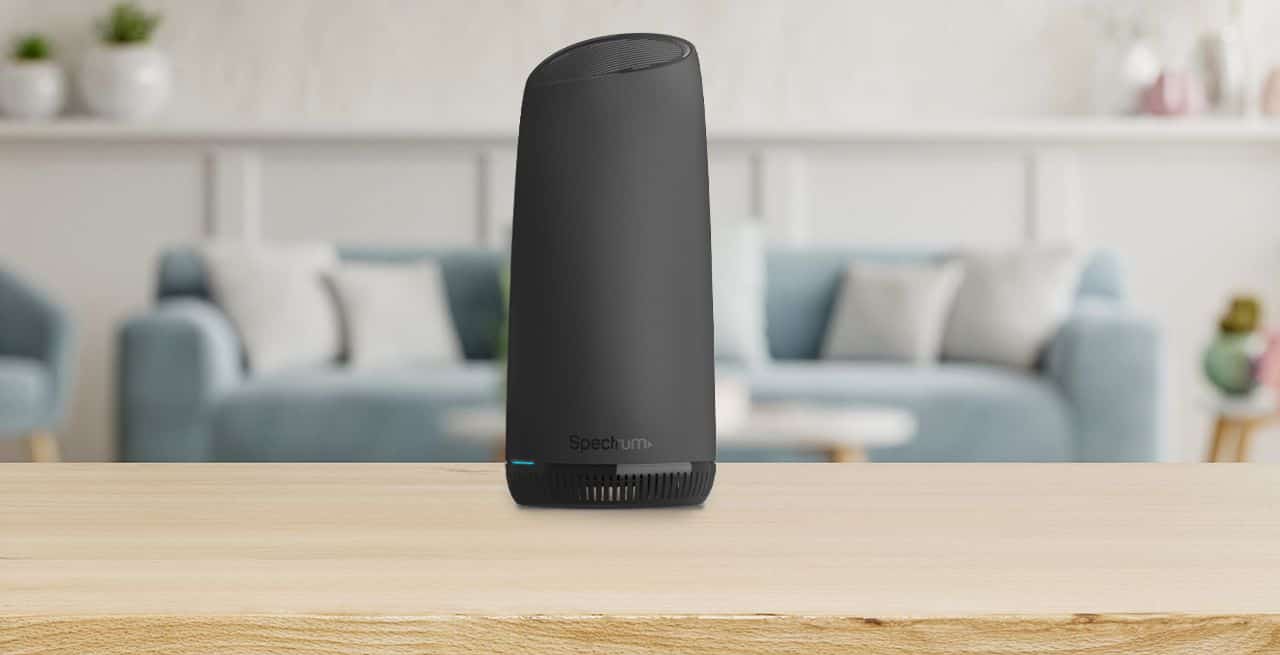Spotting an unknown device on your home network can be unsettling. It might be a harmless gadget you forgot about, or it could be a security risk. To identify the mystery device, you can access your router’s web interface and view a list of connected devices with their names, IP addresses, and MAC addresses.
You have several ways to track down the unknown device. One method is using command-line tools like “arp -a” to see IP and MAC addresses of network devices. Another option is network scanning tools such as Nmap or Fing that automatically discover devices on your network.
If you can’t recognize a device by its name or IP address, you can look up its MAC address online. This often reveals the device’s manufacturer, helping you figure out what it might be. Remember, some devices report two separate IDs, which can cause confusion.
| Method | Tool | Information Provided |
|---|---|---|
| Router Interface | Web Browser | Device Names, IP Addresses, MAC Addresses |
| Command Line | arp -a | IP Addresses, MAC Addresses |
| Network Scanners | Nmap, Fing | Detailed Device Information |
Unidentified Device on Your Network? Here’s What to Do
Finding an unknown device connected to your home Wi-Fi can be unsettling. It raises concerns about security and who might be accessing your network. But don’t worry, here’s a step-by-step guide to help you identify and handle the situation.
1. Identify the Device
- Check your router’s administration interface: Most routers have a web interface that lists connected devices. Access it by typing your router’s IP address into a web browser (often found on the router itself or in your internet service provider’s documentation). Look for a section like “Device List,” “Connected Devices,” or “Network Map.”
- Use a network scanner app: Apps like Fing or Net Analyzer can scan your network and provide details about connected devices, including their names, manufacturers, and MAC addresses.
2. Determine if it’s a Known Device
- Compare MAC addresses: Each device has a unique MAC address. Compare the unknown device’s MAC address to the MAC addresses of your known devices. You can usually find your devices’ MAC addresses in their network settings.
- Consider common devices: The unidentified device might be something you overlooked, like a smart TV, streaming device, game console, or even a neighbor’s device with a similar name.
3. Take Action
- If you can’t identify the device:
- Change your Wi-Fi password immediately: This will disconnect all devices, requiring you to re-enter the new password on your known devices.
- Enable network encryption: Make sure your Wi-Fi network is secured with WPA2 or WPA3 encryption.
- Consider MAC address filtering: This allows you to specify which devices can connect to your network based on their MAC addresses.
- Update your router’s firmware: This ensures you have the latest security patches.
- If you identify the device as harmless:
- Rename it for clarity: This helps you keep track of connected devices.
- No further action needed: If it’s a neighbor’s device, they might be inadvertently connecting to your network if you have similar Wi-Fi names.
4. Prevent Future Issues
- Use a strong, unique Wi-Fi password: Avoid common passwords or personal information.
- Regularly check your router’s device list: Monitor for any new or unknown devices.
- Keep your router’s firmware updated: This helps protect against security vulnerabilities.
Handling Unidentified Devices:
| Step | Action |
| Identify | Check router interface or use a network scanner app |
| Determine | Compare MAC addresses, consider common devices |
| Take Action | Change Wi-Fi password, enable encryption, MAC filtering, update firmware (if unknown); rename device (if harmless) |
| Prevent | Strong password, regular checks, firmware updates |
Identifying Unknown Devices
Spotting unfamiliar devices on your network is crucial for maintaining security. You can use several methods to pinpoint these potential intruders and take action.
Understanding MAC and IP Addresses
MAC and IP addresses are key to identifying devices on your network. A MAC address is a unique identifier for network hardware. An IP address is a numerical label for network connections.
To find these addresses on Windows, open Command Prompt and type “ipconfig /all”. On Mac, go to System Preferences > Network > Advanced > TCP/IP.
Router settings pages often display connected devices with their MAC and IP addresses. This lets you match known devices to their network identifiers.
Some devices may use random MAC addresses for privacy. Keep this in mind when tracking devices across multiple sessions.
Using Network Scanning Tools
Network scanning tools help you discover all devices on your network quickly. Popular options include:
- Fing: A mobile app that scans networks and provides device details
- Angry IP Scanner: A cross-platform tool for scanning IP ranges
- Nmap: A powerful command-line scanner for advanced users
These tools show device names, IP addresses, and sometimes device types. They can reveal hidden devices your router might not display.
To use these tools, connect to your network and run a scan. Compare the results to your known devices. Any unrecognized entries warrant investigation.
New Device Approval Process
Implementing a new device approval process adds an extra layer of security. Here’s a simple approach:
- Disable automatic connections for new devices on your router
- Create a list of approved devices with their MAC addresses
- When someone needs to add a device, they request approval
- Verify the device and user before adding to the approved list
- Regularly review and update your approved devices list
This process helps prevent unauthorized access and keeps your network inventory current.
| Step | Action | Benefit |
|---|---|---|
| 1 | Disable auto-connect | Prevents unknown devices from joining |
| 2 | List approved devices | Creates a baseline for comparisons |
| 3 | Request process | Controls access to network |
| 4 | Verify before approval | Ensures only trusted devices connect |
| 5 | Regular reviews | Keeps security measures up-to-date |
By following these steps, you can better manage unknown devices and enhance your network security.
Enhancing Network Security
Protecting your home network from unauthorized access requires a multi-layered approach. Implementing strong security measures can safeguard your data and devices from potential threats.
Implementing MAC Address Filtering
MAC address filtering adds an extra layer of security to your network. This method allows only devices with specific MAC addresses to connect.
To set up MAC filtering:
- Access your router’s admin panel
- Find the MAC filtering section
- Enable the feature
- Add MAC addresses of trusted devices
Benefits of MAC filtering:
- Blocks unknown devices
- Reduces unauthorized access attempts
Drawbacks:
- Requires manual updates for new devices
- Can be bypassed by advanced users
Remember to keep your list of approved MAC addresses up to date. Remove old devices you no longer use.
Securing Wi-Fi Access
Strong Wi-Fi security prevents unauthorized users from accessing your network. Use WPA2-Personal encryption for the best protection.
Steps to secure your Wi-Fi:
- Change default router login credentials
- Use a complex Wi-Fi password
- Enable WPA2 encryption
- Hide your network SSID
Consider changing your Wi-Fi password regularly. This helps remove any devices that may have gained access without your knowledge.
Disable WPS (Wi-Fi Protected Setup) through your router’s settings. While convenient, WPS can be exploited by attackers to gain network access.
Utilizing Firewalls and Security Software
Firewalls and security software form a crucial line of defense against network threats. They monitor traffic and block suspicious activity.
Key security measures:
- Enable your router’s built-in firewall
- Install reputable antivirus software on all devices
- Keep all software and firmware updated
- Use a network monitoring tool to detect unusual activity
| Security Feature | Purpose |
|---|---|
| Firewall | Blocks unauthorized network access |
| Antivirus | Detects and removes malware |
| VPN | Encrypts internet traffic |
| Network Monitor | Alerts you to suspicious activity |
Regularly scan your home network for unknown devices. This helps identify potential security breaches quickly.
Consider using security software that offers comprehensive protection. Look for features like real-time scanning, firewall, and network monitoring.
Managing Connected Devices
Effective device management enhances network security and performance. You can monitor and control which devices access your Wi-Fi to protect your home network.
Monitoring Devices on the Wi-Fi Network
To keep track of connected devices, access your router’s admin panel. Enter your router’s IP address in a web browser and log in with your credentials. Look for a section called “Connected Devices” or “Device List”.
Most modern routers offer Smart Home Manager apps. These tools provide an easy way to view and manage devices on your network. You can see device names, IP addresses, and connection status.
Use these features to spot unfamiliar devices:
- Check device names and MAC addresses
- Note connection times and data usage
- Look for unknown devices that connect frequently
Create a list of your known devices. This helps you quickly identify any new or suspicious connections.
Removing Unauthorized Users
If you spot an unknown device, take action to secure your network. First, try to identify the device. It might be a smart home gadget you forgot about.
To remove unauthorized users:
- Change your Wi-Fi password
- Enable MAC address filtering
- Disable WPS if it’s not needed
Update your Wi-Fi password through your router’s settings. Choose a strong, unique password. This forces all devices to reconnect with the new credentials.
Use your router’s blocking features to prevent specific devices from connecting. Most routers let you pause or block devices based on their MAC address.
| Action | Purpose | Difficulty |
|---|---|---|
| Change password | Disconnect all devices | Easy |
| MAC filtering | Block specific devices | Medium |
| Disable WPS | Prevent easy connections | Easy |
Regular network scans help maintain security. Set reminders to check your connected devices list monthly.
Troubleshooting and Prevention
Addressing unidentified devices on your network requires proactive measures and ongoing vigilance. Let’s explore effective strategies to maintain network security and educate users about potential risks.
Regular Network Maintenance
Perform weekly checks of connected devices on your Wi-Fi network. Use your router’s admin panel to view the list of connected devices. Note unfamiliar MAC addresses or device names.
Change your Wi-Fi password every 3-6 months. This disconnects unauthorized users and forces legitimate devices to reconnect.
Update your router’s firmware regularly. Manufacturers often release patches for security vulnerabilities.
Enable WPA3 encryption if your router supports it. This provides stronger protection against brute-force attacks.
Disable WPS (Wi-Fi Protected Setup) and Windows Connect Now features. These can be exploited by hackers to gain network access.
Consider setting up a guest network for visitors. This keeps your main network separate and more secure.
Educating Users on Security Threats
Teach family members or employees about Wi-Fi security basics:
- Never share network passwords with outsiders
- Avoid connecting to unsecured public Wi-Fi networks
- Use a VPN when accessing sensitive information online
- Recognize phishing attempts that may steal login credentials
Explain the risks of unknown devices on the network:
- Data theft
- Bandwidth hogging
- Potential malware spread
Create a simple guide for users to check connected devices on their own. Include steps to report suspicious activity.
Encourage the use of strong, unique passwords for all accounts. Recommend a password manager to make this easier.
| Security Measure | Purpose |
|---|---|
| Regular password changes | Prevent unauthorized access |
| Firmware updates | Patch vulnerabilities |
| WPA3 encryption | Stronger Wi-Fi protection |
| Disable WPS | Remove potential exploit |
| User education | Increase overall network safety |
Frequently Asked Questions
Identifying and managing unknown devices on your network is crucial for maintaining security. These questions cover essential aspects of device detection, identification, and network protection.
How can I find the manufacturer of a device connected to my network by its MAC address?
You can use online MAC address lookup tools to find the manufacturer. Enter the first six characters of the MAC address into a lookup service to identify the device maker. This information often helps narrow down the type of device.
What steps can I take to determine the type of device that is connected to my WiFi?
Start by checking your router’s admin panel for connected devices. Look for descriptive names or IP addresses. Use network scanning tools like Nmap or Fing to get more details. These tools can often identify device types based on their network behavior.
Is it possible to remove a device from my network if I do not recognize it?
Yes, you can remove unknown devices from your network. Access your router’s settings and find the list of connected devices. Look for an option to block or remove the unrecognized device. You may need to change your WiFi password to prevent it from reconnecting.
How can I identify the operating system of an unknown device on my network?
Use advanced network scanning tools like Nmap. These tools can perform OS fingerprinting to guess the operating system. Look for patterns in network traffic or open ports that might indicate the OS type. Remember that this method isn’t always 100% accurate.
What are the security risks of having an unidentified device connected to my home internet?
Unidentified devices pose several risks. They might access sensitive data, use your bandwidth, or serve as entry points for attacks. Unknown devices could potentially compromise your network security or be used for illegal activities on your connection.
How can a network administrator receive alerts when a new device connects to the network?
Set up network monitoring software that supports device detection alerts. Configure your router or a network security appliance to send notifications for new connections. Some advanced routers offer built-in features to alert you about new devices joining your network.
| Method | Ease of Use | Effectiveness |
|---|---|---|
| Router Admin Panel | Easy | Moderate |
| MAC Address Lookup | Moderate | High |
| Network Scanning Tools | Complex | Very High |
| OS Fingerprinting | Complex | Moderate |
| Changing WiFi Password | Easy | High |
| Network Monitoring Software | Moderate | Very High |







